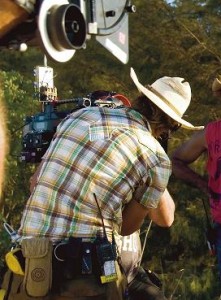On Location: The Circuit
 The Circuit returns for a second season. Peter Galvin travelled to Broome, Western Australia, to see how justice is done in this critically acclaimed drama.
The Circuit returns for a second season. Peter Galvin travelled to Broome, Western Australia, to see how justice is done in this critically acclaimed drama.
Once a month a magistrate and a team from the Aboriginal legal service make a 2000 km round trip across the Kimberley region of Western Australia, criss-crossing the far north of the state, hearing cases in many of the remote indigenous communities there.
This is the factual basis for the six-part $5million drama series The Circuit. Made by West Australian company Media World Pictures in association with Screen Australia, Screenwest, Lotterywest, Goolarri Media and SBSTV, the first season was produced in 2006 and aired to much critical acclaim the following year. Shooting on the second season of the series wrapped in Broome, the main location, before Christmas 2008; post-production is based in Perth at Whiz Digital.

